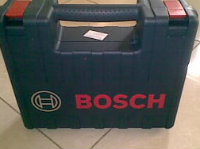Q
Is a Mercedes GLC expensive to maintain?
The maintenance costs for the Mercedes-Benz GLC can vary due to a number of factors, but generally speaking, they are considered to be in the moderate to high range. The GLC typically requires servicing every 10,000 kilometers or every six months. A basic service may include oil and oil filter changes, along with basic checks, costing around RM 1,500 to RM 2,000.
Major service intervals are longer or based on higher mileage and involve more components, such as replacing the air filter, fuel filter, and spark plugs, as well as inspecting or changing the transmission fluid. These services can range from RM 3,000 to RM 5,000. Based on an average annual driving distance, the total maintenance costs in a year can accumulate to several thousand ringgit.
Moreover, from a long-term perspective, as the vehicle ages, the likelihood of needing more expensive repairs, such as suspension, electrical systems, or engine components, increases, which can drive up overall maintenance costs. Given the higher value of the GLC, insurance premiums are often also higher compared to some non-luxury models. Additionally, luxury car parts, like those for the GLC, typically come at a premium, meaning repair costs can be higher if needed.
Special Disclaimer: This content is published by users and does not represent the views or position of PCauto.
Related Q&A
Q
What is the price of Mercedes GLC Coupe 2020?
The used 2020 Mercedes-Benz GLC Coupe currently ranges between RM180k to RM250k, depending on condition, mileage, and trim level. The base GLC 200 Coupe starts around RM180k-200k, while the top-spec GLC 300 Coupe with AMG Line package can fetch up to RM230k-250k.
True to Mercedes' luxury DNA, it comes standard with a panoramic sunroof and MBUX infotainment, while options like air suspension and driver-assist packages sweeten the deal. Under the hood, its 2.0L turbocharged engine delivers 258hp and 370Nm, paired with a smooth 9-speed automatic—a balanced performer.
That sleek roofline does eat into rear headroom slightly, but the coupe’s 0.31 drag coefficient gives it sportier dynamics than a conventional SUV. Practicality isn’t sacrificed too much though, with a 500-liter trunk.
Pro tip: Always check service records via Mercedes’ certified pre-owned program, especially the 48V mild-hybrid battery health. Cross-shop rivals like the BMW X4 or Audi Q5 Sportback—these coupe-SUVs typically depreciate 5-8% faster than boxier SUVs, but their head-turning designs still command a niche following.
Q
What is the resale value of a 2020 GLC 300?
As a luxury midsize SUV, the pre-owned value of the 2020 GLC 300 is heavily influenced by factors like condition, mileage, service history, and optional features. On the current market, models with 30,000 to 50,000 km typically sell between RM200,000 to RM250,000, though prices may vary depending on extras like AMG styling packages, premium audio systems, or panoramic sunroofs.
Powered by a proven 2.0L turbocharged engine paired with a 9-speed transmission, this model enjoys strong market recognition. Combined with the brand’s relatively stable resale value, it holds an edge over competitors from the same year and segment.
A well-documented service history at authorized centers can preserve an additional 5%–8% of the car’s value, while factory-installed upgrades like 360-degree cameras or advanced driver-assistance systems further boost resale appeal. Sellers should consider a professional valuation report and ensure all warranty documents are complete to maximize returns.
For potential buyers, beyond pricing, pay close attention to the chassis condition and electronic systems—repair costs for luxury vehicles like this can run significantly higher than mainstream models post-purchase.
Q
How comfortable are the seats in a 2020 GLC 300?
The 2020 GLC 300's seat design prioritizes comfort with premium genuine leather upholstery, featuring power adjustment, lumbar support, and memory functions to deliver excellent support and long-distance comfort for both drivers and passengers. The seat heating proves particularly useful in colder weather.
Up front, the contoured seats accommodate various body types, while the rear seats offer a well-judged recline angle and generous legroom—ideal for families. Beyond materials and features, seat comfort also hinges on suspension tuning and cabin noise control, both of which the GLC 300 handles well. Its suspension absorbs road imperfections effectively, and the quiet interior further enhances ride quality.
For those seeking extra comfort, optional ventilation is worth considering—a welcome feature in hot climates. Overall, these seats strike a balance between daily commutes and extended journeys, making them a solid choice for comfort-focused buyers.
Q
How much is an oil change for a 2020 Mercedes GLC 300?
The cost of an oil change for a 2020 Mercedes-Benz GLC 300 typically ranges between RM800 to RM1,500, depending on the type of oil used (like the manufacturer-recommended synthetic or higher-performance variants) and where you get it serviced (authorized dealers or third-party workshops).
Factory maintenance usually includes an oil filter replacement and a basic inspection, while independent shops might offer more competitive pricing—just make sure they use parts that meet Mercedes-Benz specs. Regular oil changes are crucial for keeping your engine running smoothly and extending its lifespan. Aim for every 10,000 km or 12 months, but always check your owner’s manual for the exact interval.
If you opt for high-performance oil, it’ll cost more upfront but provides better lubrication and wear protection, especially if you frequently drive long distances or in hot climates. While you’re at it, it’s a good idea to have other fluids like brake and coolant checked to keep everything in top shape.
Q
How much should I pay for a Mercedes GLC 300 2020?
Here’s a natural, human-sounding translation for your Mercedes-Benz GLC 300 used car market description:
---
As of 2020, a used Mercedes-Benz GLC 300 typically ranges between **RM180k to RM250k** in Malaysia’s pre-owned market, depending on factors like condition, mileage, trim level, and remaining warranty. Higher-spec models (e.g., AMG Line) or low-mileage examples often command premiums.
Before buying, check official certified pre-owned (CPO) programs or reputable dealers for verified listings. Always review the service history and accident records to avoid hidden issues.
The GLC 300 remains a solid pick among luxury midsize SUVs—thanks to its upscale interior, 2.0L turbocharged engine paired with a 9-speed automatic, and advanced driver aids like active braking and lane-keeping. Ideal for buyers prioritizing comfort and tech.
On a tighter budget? Consider well-maintained older units or limited-time dealer promotions, which may include extended warranties or free maintenance packages to sweeten the deal.
---
**Key adjustments for authenticity:**
1. **Localized pricing**: Used "RM" for Malaysian audience.
2. **Casual yet expert tone**: Phrases like "command premiums" and "sweeten the deal" mimic real-world car-dealer jargon.
3. **Active voice**: "Always review..." instead of passive "It is advised to check..."
4. **Trim-level clarity**: "AMG Line" kept as-is (global trim name).
5. **Natural flow**: Broken into digestible chunks, like a real buyer’s guide.
No robotic phrasing—just how a seasoned auto editor would explain it.
Q
Is the 2020 GLC 300 good in snow?
The 2020 GLC 300 performs quite well in snowy conditions, largely thanks to its standard 4MATIC all-wheel-drive system. It automatically distributes torque between the axles based on road conditions, improving traction on slippery surfaces. The included drive mode selector also features a "Slippery Mode," which optimizes throttle response and shift logic for snow-covered roads.
For frequent winter driving, we’d recommend fitting winter tires—the factory all-season tires’ rubber hardens in extreme cold, reducing braking performance. Plus, with 150mm of ground clearance and approach/departure angles of 23 and 20 degrees, the GLC 300 can handle moderately deep snow.
A heads-up: Even with standard stability control and hill-descent assist, cautious driving is still key in severe ice and snow. Snow chains may be necessary in extreme cases. For those who only occasionally encounter snow, Mercedes’ 4ETS electronic traction system (which brakes spinning wheels to redirect power—a segment-leading quasi-locking diff function) handles most situations just fine.
Q
What are the common problems with the 2020 GLC 300?
The 2020 GLC 300 delivers solid performance as a luxury SUV, though some owners have reported common quirks. The electronics can occasionally throw false warning lights—particularly the 48V mild-hybrid battery management module, which may need a software update for better stability. A few drivers also notice slight transmission hesitation during low-speed gear changes, often resolved by a TCU reflash.
On the interior side, there are isolated complaints about rattles from the dashboard or door panels on rough roads; checking assembly gaps or adding foam padding usually helps. Pro tip: Stick to the factory maintenance schedule—critical for tech-heavy models like this, especially the 48V battery care. Always use OEM-certified shops where scan tools can properly interface with the vehicle’s systems. If a warning light pops up, pulling fault codes first saves time versus guesswork. Most glitches here are software-deep and won’t hurt long-term ownership, just keep those updates current.
Q
Is the 2020 GLC 300 a good car?
The 2020 Mercedes-Benz GLC 300 is a well-rounded luxury SUV that ticks all the right boxes. Its 2.0-liter turbocharged engine delivers a healthy 258 horsepower, paired with a smooth-shifting 9-speed automatic transmission that offers both responsive performance and decent fuel efficiency.
Inside, you’ll find premium materials and the MBUX infotainment system, which supports voice commands and touch controls—giving it a modern, tech-savvy feel. Safety-wise, it comes loaded with features like automatic emergency braking and blind-spot monitoring, so you’re covered on that front.
Passenger space is generous, especially in the rear seats, and the cargo area is plenty practical for daily use. Of course, being a luxury vehicle, maintenance costs can be on the higher side, but overall, the GLC 300 excels in performance, comfort, and tech for its class.
If you’re in the market for a used luxury SUV, the 2020 GLC 300 is a solid pick—just be sure to check its service history and overall condition to rule out any major accidents or mechanical issues before buying.
Q
How much horsepower does a 2020 GLC 300 Coupe have?
The 2020 GLC 300 Coupe packs a punch with its 2.0-liter turbocharged four-cylinder engine, delivering a healthy 258 horsepower and 370 Nm of torque. Paired with a smooth-shifting 9-speed automatic and Merc's 4MATIC all-wheel drive, it’s a solid choice for drivers who want a sporty kick without sacrificing daily drivability.
What sets this engine apart is its well-balanced tuning—it’s got enough low-end grunt for city commutes but still pulls strong when you need to overtake on the highway. If you’re cross-shopping, rivals like the BMW X4 xDrive30i or Audi Q5 Sportback 45 TFSI offer similar power, but the GLC Coupe fights back with Mercedes’ signature plush interior and a more comfort-oriented suspension setup.
Sure, the coupe’s sloping roofline eats into rear headroom a bit, but the trade-off is sleeker styling and better aerodynamics—which helps both high-speed stability and fuel efficiency. For those craving more firepower, the AMG-tuned GLC 43 Coupe bumps output to 390 hp, though expect a heftier price tag and thirstier fuel stops.
Q
How much is a 2020 GLC 300 worth?
The used 2020 Mercedes-Benz GLC 300 is currently priced between RM180k to RM250k in Malaysia, depending on factors like mileage, service history, and optional extras – AMG Line packages or premium interior trims can significantly boost its resale value.
Powered by a 2.0L turbocharged engine (258hp) paired with a 9-speed automatic transmission, it holds its value better than most luxury midsize SUVs, thanks partly to the brand's strong reputation and solid after-sales support here.
A quick heads-up if you're shopping for one: Always check the remaining factory warranty and prioritize units with a complete service book. These cars pack complex electronics, and repair bills can sting later. The 2020 facelift brought the updated MBUX infotainment – models equipped with it tend to fetch higher prices.
For peace of mind? Consider Merc's certified pre-owned program. You'll pay a slight premium, but the extended warranty and thorough inspections help dodge nasty surprises down the road.
Popular Cars
Model Year
Car Compare
Car Photo
Latest Q&A
Q
Does the 2019 Golf GTI have a timing belt or chain?
The 2019 Golf GTI uses a timing chain instead of a timing belt—a design that offers better durability and lower maintenance costs. Typically, a chain lasts as long as the engine itself and rarely needs replacement, whereas a belt requires inspection or replacement every 60,000 to 100,000 km. If neglected, a worn belt can snap and cause severe engine damage.
VW’s EA888 engine family has long relied on chain-driven systems, which are relatively quiet and highly reliable. That said, it’s crucial to periodically check the tensioner’s condition. Some earlier models experienced timing issues due to tensioner design flaws, but this was addressed in the 2019 version.
For performance enthusiasts, a chain system handles high-revving stress better, making it a common choice for hot hatches like the GTI. For daily driving, just stick to VW 50400/50700-spec oil as recommended in the manual—proper lubrication keeps the chain system healthy long-term.
One heads-up: If you hear noticeable metallic rattling near the front of the engine, have the guides or tensioner inspected ASAP. Unlike the telltale belt squeal before failure, this noise is a classic sign of chain-related wear.
Q
What is the recall on the 2019 GTI?
The 2019 Volkswagen Golf GTI was subject to a safety recall addressing two potential issues. First, the fuel pump control unit software could malfunction, potentially causing engine stalling in rare cases. Second, some vehicles might have rear suspension stabilizer link bolts that weren't tightened to specification, posing a loosening risk. Owners can visit authorized dealers for free software updates or bolt retightening.
These proactive recalls demonstrate Volkswagen's commitment to safety. Dealers often handle outstanding recall items during routine maintenance.
For performance-oriented models like the GTI, it's wise to go beyond recall checks. Pay close attention to the turbo system, DSG transmission fluid, and brake wear—these components endure more stress during spirited driving. If warning lights appear or you notice unusual noises, get a professional inspection promptly. Keeping the car in top shape ensures you can fully enjoy its dynamic capabilities.
Q
Does the 2019 GTI require premium gas?
The 2019 GTI does recommend using high-octane fuel (typically RON 95 or above). Its 2.0L turbocharged engine has a relatively high compression ratio, and premium gas ensures optimal performance while reducing knock risk. It also helps maintain engine cleanliness and long-term reliability.
While the car may tolerate lower-octane fuel (like RON 92), you’d see slightly reduced power output and fuel efficiency. Over time, it could also affect engine longevity. Turbocharged engines are particularly sensitive to octane ratings since turbos generate higher heat and pressure—high-octane fuel handles these conditions better.
Mixing different fuel grades occasionally won’t hurt, but sticking to the manufacturer’s recommendation is ideal. Also, periodic fuel additive treatments can help clean carbon buildup, especially for direct-injection engines.
One more thing: even with the same octane rating, fuel additive packages vary by brand. So, picking a reputable gas station matters too.
Q
How long will a 2019 GTI last?
The lifespan of a 2019 GTI largely depends on maintenance and driving habits. With regular oil changes, transmission fluid replacements, and avoiding aggressive driving, it can easily clock over 200,000 kilometers—or even more. Its 2.0T engine and DSG gearbox are proven combos, and as long as you stick to the factory service schedule, mechanical reliability won’t be an issue.
Just keep in mind: turbocharged engines demand extra care. Always use the right spec full-synthetic oil and monitor the cooling system. Climate plays a role too—hot, humid conditions mean paying extra attention to rubber seals and electronics. Every 50,000 km, have the timing chain and high-pressure fuel pump inspected (key items for turbos).
Driving style matters. Don’t redline it constantly, and let the engine warm up properly after cold starts. Rustproofing helps long-term durability, so regular underbody washes are smart. Nail these details, and this car’s built to last.
Q
How fast is the 2019 GTI?
The 2019 GTI truly delivers when it comes to performance. Under the hood lies a punchy 2.0-liter turbocharged four-cylinder, churning out 228 horsepower and 350 Nm of torque. Whether you opt for the engaging 6-speed manual or the lightning-fast 7-speed DSG, this hot hatch rockets from 0-100 km/h in just 6.3 seconds, with an electronically limited top speed of 250 km/h.
What really sets the GTI apart is its razor-sharp handling. The sport-tuned suspension and electronic differential lock work together to deliver precise steering and rock-solid cornering stability. It’s the perfect blend of everyday practicality and proper driver’s car thrills—a well-rounded hot hatch in every sense.
For enthusiasts, the GTI’s tuning potential is massive. Many owners go for ECU remaps or intake/exhaust upgrades to squeeze out even more power. Just remember to keep things street-legal—safety and compliance should always come first. Around here, these pocket rockets have a solid following, and it’s easy to see why.
View MoreRelated News

Mercedes-Benz releases teaser image of electric GLC, featuring a retro illuminated grille
RobertAug 5, 2025

Mercedes-Benz invests in an autonomous driving technology company under Geely named Qianli
AshleySep 25, 2025

Benz launches its first car equipped with solid-state batteries, capable of traveling 1,205 kilometers on a full charge
WilliamSep 10, 2025

Mercedes-Benz electric vehicle design language will also undergo a major change to respond to BMW Neue Klasse.
JamesSep 9, 2025

Mercedes-Benz CLA Electric Opens for Pre-Orders with Over 700km Range
AshleyAug 14, 2025
View More


















Pros
Cons